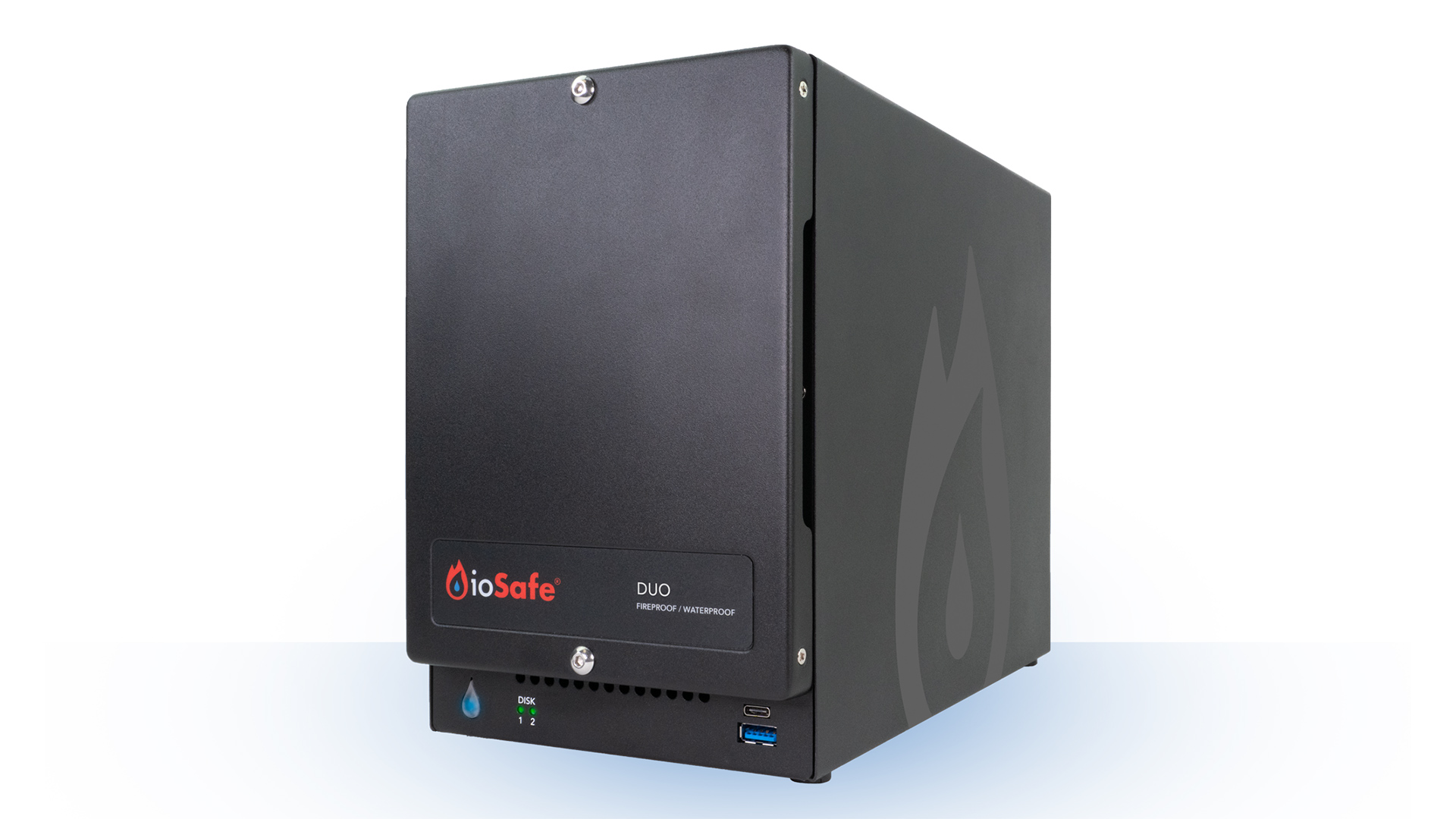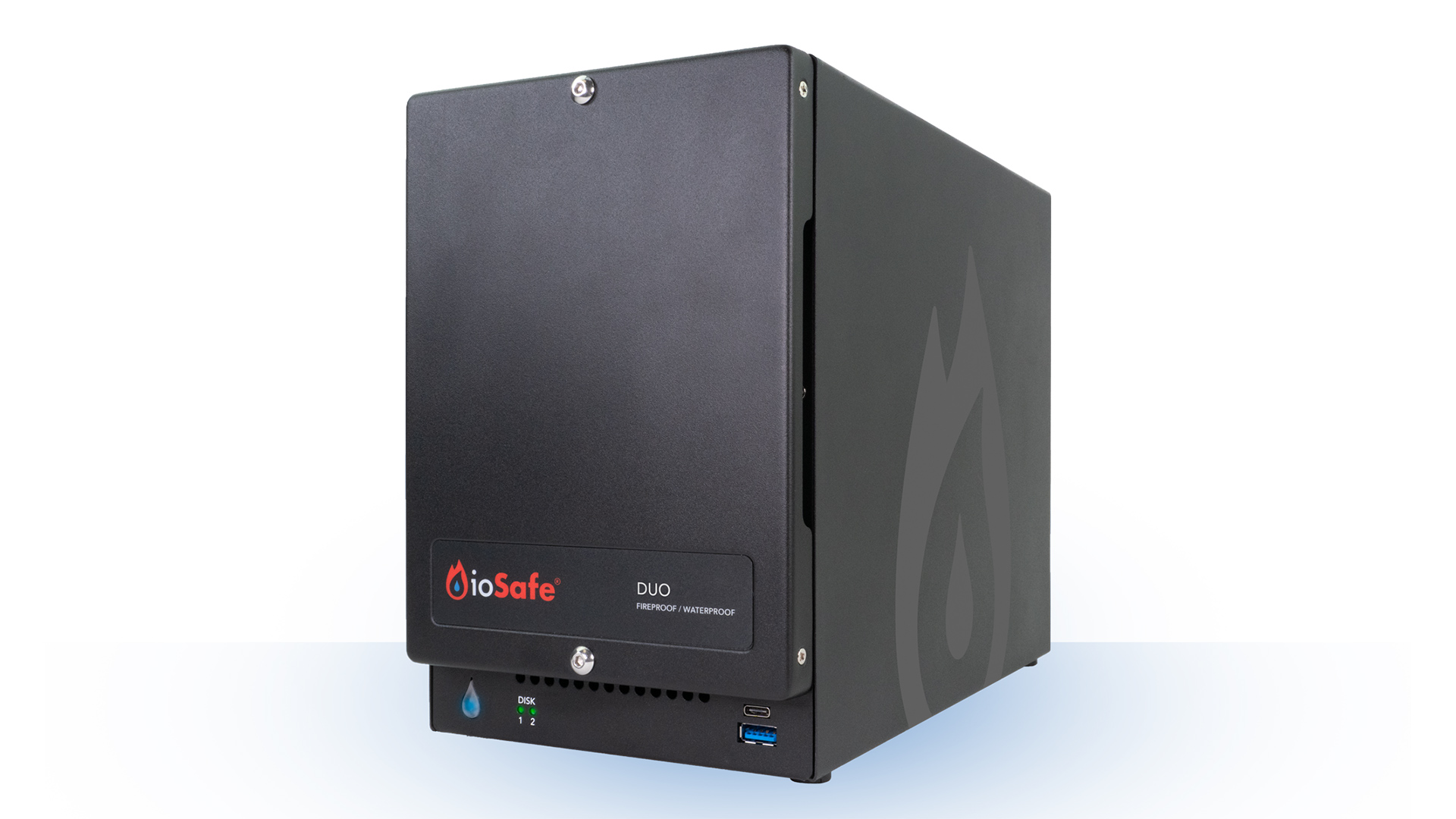

Review: You want a tough storage system? Well here's one of the toughest we've found. The ioSafe Duo.
The ioSafe Duo unit is a hard drive / SSD drive unit for two disks that you can set up in RAID 0, 1, JBOD or Span. As with all ioSafe digital storage equipment, the unit is fireproof, waterproof and theft-proof. It’s available as an empty box or pre-loaded with two hard disk drives of 4TB or 8TB each. The unit supports drives of up to 12TB, has a USB-A port and one USB-C port at the front and connects to your computer through a USB-C type USB 3.2 Gen 2 port on the back. In theory, the unit can deliver 10 Gbps throughput.
Inside my 8TB test unit were two Seagate IronWolf disks. Those are Seagate’s NAS disks and the ones in my 8TB ioSafe Duo test unit were 5900rpm drives — not the fastest of the pack but the most silent and probably the ones that will last the longest as well. A full list of qualified drives is available here.
The unit is made of black matte metal with a laser-etched flame on one side and the ioSafe logo on the front door. It weighs 15kg, which is entirely attributable to the fireproof and waterproof materials. Behind the fireproof front door which weighs a tonne by itself, is another — waterproof — door. A nice side-effect of these massive physical protection layers is that this RAID box is silent. You can’t hear the disks spinning nor the fan running, not even in a quiet office. There’s simply too much mass for the noise to reverberate.
Built for toughness
The Duo is designed to resist a temperature of up to 840 degrees Celsius for 30 minutes and ingress from waterjets and submersion in 3 metres of water for 72 hours (three days). All of the ports and even the RAID jumpers and fan at the back are exposed, yet they all resist fire and water without the need for further protection like silicon gaskets, etc. That’s all due to DataCast and HydroSafe (waterproof) technology, both ioSafe patents.
All this protection doesn’t mean you can’t exchange the internals like disks and the ventilator. The Duo’s fan, for example, can be replaced with the use of a screwdriver only and it doesn’t even require you to open the box.
Furthermore, if you want to replace disks — or simply start with an empty Duo — that’s possible too. Inside the shipping box, you’ll even find a specially designed hex tool that flexes to prevent you from under/over-tightening the screws or damaging the waterproof gasket. As I see it, the only real point of failure of the Duo is the disks.
That’s why ioSafe advises keeping them set at the default RAID 1 configuration, which offers disk failure protection. Of course, if you want the most stringent protection in that department, you’ll need a RAID 5 box (and even then you’re not 100% protected as even the briefest of power glitches while the RAID is rebuilding will render the checksum, on which RAID 5 depends to rebuild the data after disk failure, useless).
The Duo is your best bet for a safe local backup and, in my opinion, much more secure than cloud backups where you have to take into account a number of issues like exposure to hacking. It’s relatively fast as well, although the Duo isn’t a speed demon. The fastest throughput I was able to squeeze out of the 5900rpm disks was 220MB/sec. If you fill it up with two SSDs you should be able to reach speeds of around 400MB/sec, even in RAID 1 configuration.
The Duo can be had for $399 if you buy the empty box. For my 8TB test unit, you’ll pay $649. A 16TB version retails at $899. The Duo comes with two years of free data recovery service included.
Tags: Technology


Comments